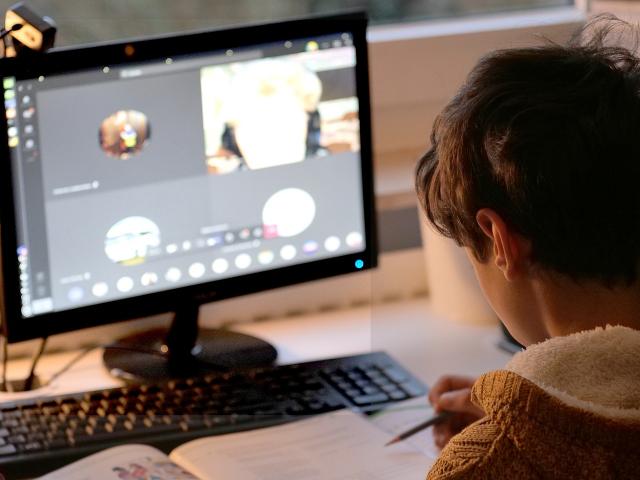Inadequate computer access is further hampering struggling students.
Eight in 10 students in lower socio-economic schools surveyed for a new report had trouble finishing class work and assignments because they didn’t have a computer.
KPMG prepared the report pro-bono for WorkVentures, a not-for-profit supporting Australian communities through technology, skills and meaningful career pathways.
It also found two in five (44 percent) Year 6 students and a quarter of Year 10 students did not have access to a computer outside of school.
One in two (51.6 percent) lower income families reported their children could miss out on the digital devices needed for schoolwork because they couldn’t afford them.
So WorkVentures is calling for a National Device Bank for students who can’t otherwise afford to access vital educational technology.
The organisation said digital learning increasingly dominated classrooms and online resources were an essential part of learning.
Access issues put children at risk of falling behind academically and grappling with the social impacts and limitations of future employment opportunities.
WorkVentures IT solutions and social impact director Jacob Muller said not everyone was afforded the same opportunities when it came to digital technologies.
“Australia is undergoing a rapid digital transformation but despite increased connectivity, socially and financially disadvantaged families have found themselves on the wrong side of the digital divide due to affordability and confidence barriers,” Mr Muller said.
“Our report found that students, who are from schools in areas that identified as having greater relative socio-economic disadvantage, experienced reduced or no access to a computer after school.
“This reduced access outside of school is likely to have a negative impact on the educational outcomes for students from lower socio-economic backgrounds.”
The report found schools commonly provided laptops for Year 6 students (57 percent), but only a third (32 percent) of Year 10 students received a device from their school.
“We have been addressing digital exclusion by refurbishing end of life corporate laptops and PCs and distributing these to individuals who otherwise couldn’t afford them, including school students,” Mr Muller said.
“Unfortunately, there have been various hurdles to scaling this up including a lack of device donations and lack of consistent funding to support the ongoing costs.”
The WorkVentures report highlighted the benefits to students of access to a laptop out of school, with 83 percent of surveyed students experiencing improvement in their grades, and 97 percent indicating that their new laptop supported them in completing their homework and assignments.
WorkVentures CEO Caroline McDaid said a key component to closing the digital divide was a national strategy.
“WorkVentures is urging the introduction of a National Device Bank to aid digitally excluded Australians by providing free digital devices,” she said.
“We want to ensure all children have access to digital learning essentials so they can make the most of their education and not miss out due to their individual circumstances.”
Over a five-year period, the Australian public and corporate sector will refresh 10 million laptops, PCs, and tablets.
Most of these devices are currently diverted into international markets for profit, recycled, or sent to landfill.
“While we have had some Australian companies and government agencies donating devices for social good for a number of years, there is substantial scope to amplify this across the corporate and public sector landscape,” Ms McDaid said.
“We want to see a system where these devices are kept in Australia and redistributed for free to people who are digitally excluded.
“We are calling upon these organisations to get involved and for the public to advocate for a National Device Bank to help students get connected for the good of their education and their future.”
A National Device Bank aims to secure one million pledged devices to support digital inclusion programs within five years while providing more than 100,000 Australians with devices, connectivity, and digital coaching.
It also looks to divert 2500 tonnes of potential ewaste, promoting a circular economy while also combating its environmental impact.
Visit workventures.com.au/national-device-bank to find out more.







